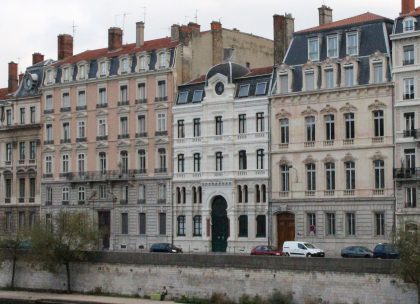
The Jewish community in the historical capital of the Gauls and, for historians, capital of the French Resistance, has now regained an undeniable dynamism. There are many notable sites surrounding the Grand Synagogue , built in 1864, as well as some excellent kosher restaurants. All in all, they make Lyon a very pleasant stop. Event information is available from the Chief Rabbinate.
As in many French cities, the presence of Jews there probably dates back to the Roman Empire, but was recorded in the Middle Ages.
This, from the 9th century when they formed an important community. They then lived near rue Juiverie, at the foot of Mont Fourvière.
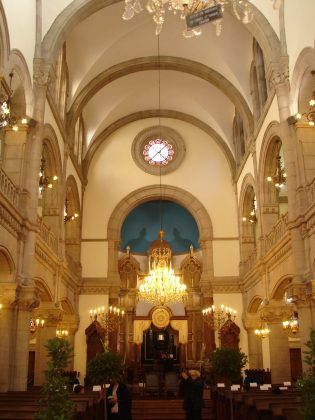
The Jews were expelled in 1250, but resettled there a hundred years later. Another round trip of this kind took place at the beginning of the 15th century.
The sustainability of Jewish life in Lyon took shape with the French Revolution, as in many other cites of France. Made up of families from Comtat Venaissin, Alsace, Bordeaux and Avignon, they bought land to establish a cemetery.
From 300 in 1830, the number of Jews rose to 700 in 1840, mainly thanks to the arrival of Jews from Alsace-Lorraine. They lived largely rue Lanterne and rue de la Barre.
In 1864, the Grande synagogue de Lyon was opened Quai Tilsitt. Long discussions took place with the authorities. The municipality made available the salt granary land in 1862 and it was built by the architect Abraham Hirsch.
The city also hosts a Sephardic rite synagogue, Neveh Chalom , built in the early 20th century by Jews from Greece and Turkey.
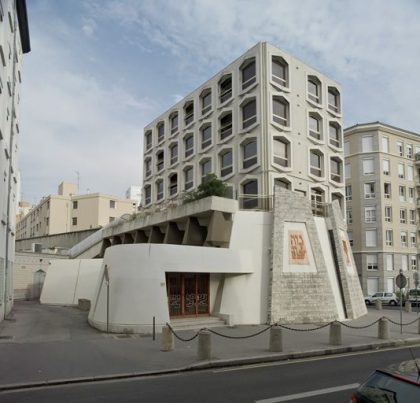
Large center of the Resistance, the Jews took part in it considerably. It was in this city that Jean Moulin, sent by General de Gaulle to organize the Resistance, was arrested and tortured.
Cardinal Pierre Gerlier publicly denounced the abuses committed against the Jews and participated in the efforts of the Resistance.
If the city of Lyon counted only 7000 Jews after the war, this figure increased rapidly with the reindustrialisation and the arrival of the Jews of North Africa.
Thus, in 1969 there were nearly 20,000 Jews in Lyon.
The city also has a Jewish cemetery.
There are also Jewish communities in the cities of the region, mainly in Villeurbanne. Several synagogues, mikvaot and study centers have settled there.
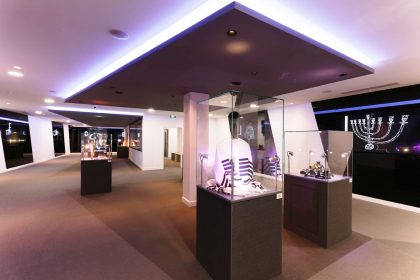
The Cultural Institute of Judaism recently opened in Lyon. In a republican spirit, it facilitates the discovery of Judaism thanks to an educational approach on different levels, combining presentation of old objects and use of the latest technological innovations (giant screens, digital tablets, virtual reality). It also regularly organizes visits for high school and college students in the region.
The course is organized around the following themes: the history of the Jewish people, religion and religious practices, anti-Semitic prejudices and the place of Jews in France.
Interview with Ilan Levy, journalist and guide
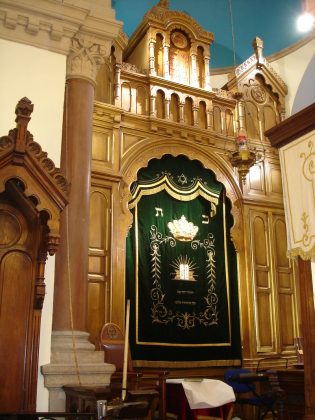
Jguideeurope: How do you perceive the development in recent years of Judaism in Lyon and of the general interest in places of reference for Jewish cultural heritage?
Ilan Levy: Lyon is fortunate to have a synagogue listed in the Supplementary Inventory of Historic Monuments: the Tilsitt synagogue. This place of worship is very important for the Lyonnais, especially because so many weddings take place there. Visits are organized there throughout the year, outside the Covid period, in particular by school groups.
Recently renovated, on the occasion of its 150th anniversary, the synagogue has had a complete makeover. It is possible to admire the stained-glass windows and the organ, as well as the architecture proposed by Abraham Hirsch, the architect of the city of Lyon at the end of the 19th century, which gives it a look close to a Protestant temple. It is also the subject of numerous visits during the yearly Heritage Days organized all over in Europe, and concerts are given there at each “Fête de la Musique”.
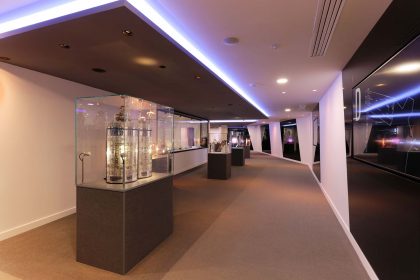
Is there a lesser-known place linked to this heritage that you think is important to know?
Outside of the Tilsitt Synagogue, the Jewish heritage is more recent and does not offer an architecturally remarkable building. The Cultural Institute of Judaism, built next to the Névé Chalom synagogue, was inaugurated in 2020. It offers an educational path, using the latest technological discoveries, on Judaism, its history and its traditions. It aims to make known the Jewish religion, its rites, its festivals, its liturgy and, thus, to fight against prejudices and anti-Semitism. While strolling in its alleys, the public will discover the many Jewish festivals, the traditions and will be able to attend a Shabbat service in 3 D at the Tilsitt synagogue.

Lyon has an important place in the history of the Resistance. How does the city promote the cultural sharing of this history? In what places?
The city, capital of the Resistance, offers several high places of this history. The Center for the History of the Resistance and Deportation is an educational place to visit for its permanent collection and exhibitions. During the war it was the place where the Gestapo and the sinister Klaus Barbie tortured resistance fighters in the cellars of this former health institute. Note that the Comoedia cinema, opposite the CHRD, was also used as cinemas by the Nazis during the war. Klaus Barbie, the head of the Gestapo, the “butcher of Lyon” did not hesitate to go and find the resistance fighters at Fort Monluc during the day to torture them and bring them back in the evening to the sinister prison of this fort.
The Fort Montluc is a military prison built in 1921. From 1940 to 1942, it served as a prison in Vichy before being used by the Nazis who locked up Jews and resistance fighters there. In appalling conditions, several in cells, they are crowded into the prison and tortured during the day. The Jews are interned in the “Jewish hut”, a kind of wooden warehouse, which no longer exists today, in the courtyard under even more appalling conditions. They are most often then taken to Perrache station to be deported and exterminated in Auschwitz.
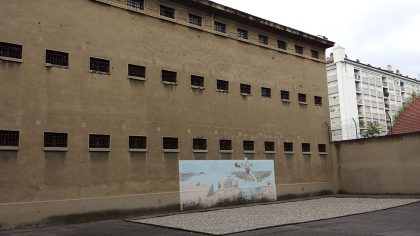
The 44 Jewish children of the House of Izieu and their companions, whom Barbie will round up in their colony of Ain on April 6, 1944, will pass through Montluc before being deported and exterminated. From this prison, only André Devigny, a French soldier and resistance fighter, managed to escape in August 1943 in order to escape his death sentence. This episode will be the subject of Robert Bresson’s 1956 movie A Man Escaped.
The prison will remain active after the war, then become a prison for women before closing permanently in 2009 and becoming a National Memorial. When France, thanks to the work of the Klarsfeld couple, had Klaus Barbie arrested in South America, the Justice Minister Robert Badinter, whose father was deported by Barbie during the Raid on rue Sainte Catherine, had him stay at the Montluc prison before his trial. The court with 24 columns of this historic trial is located on the Quais de Saône in front of a few hundred meters from the Tilsitt synagogue.
A plaque is affixed at 12 rue Sainte Catherine to commemorate the raid organized by Klaus Barbie on February 9, 1943 in this office of the General Union of the Israelites of France where 86 people were arrested and deported. Another plaque has existed since 2016 on rue Boissac where the Consistory offices were held during the war. Finally, after Montluc and the CHRD, an hour’s drive from Lyon, is the Maison d’Izieu Memorial, a symbolic educational center of the genocide of Jewish children.